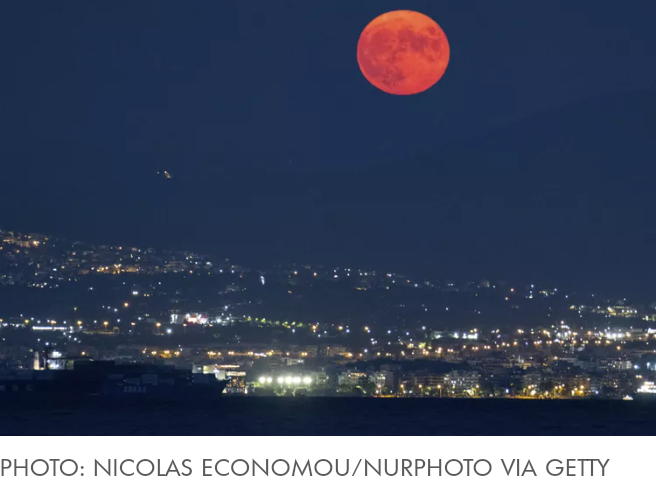What is a supermoon ? Why it is special and facts

A supermoon is a term used to portray a full moon that is much bigger and more brilliant than a standard full moon.
This peculiarity happens when the moon is at its nearest distance to the Earth in its circular circle, known as the perigee. During a supermoon, the moon can show up to 14% bigger in breadth and up to 30% more brighter than a common full moon seen at its farthest separation from the Earth (apogee).
The moon's orbits around the Earth is definitely not a perfect circle; it's marginally stretched, prompting varieties in its separation from the Earth all through its circle. At the point when the full moon harmonizes with the perigee, it makes the dynamite sight of a supermoon.
Reasons why The supermoon is considered special
- Size and Brilliance: The moon seems bigger and more splendid overhead, making it outwardly dazzling and enthralling to notice.
- Intriguing Event: Supermoons are generally uncommon occasions, and they don't occur consistently. They happen a couple of times each year, contingent upon the moon's situation in its circle.
- Social and Fables Importance: Supermoons have been noticed and celebrated in different societies over the entire course of time.
Certain individuals partner supermoons with changes in human way of behaving, cataclysmic events, or other critical occasions, despite the fact that there is no logical proof to help these convictions. - Space science and Photography: Supermoon draw in beginner cosmologists and photographic artists who need to catch the moon's noteworthy size and splendor. It gives an astounding an open door to stargazing and moon photography.
Facts
- This August begins and ends with a full moon.
- This month's full moon, nicknamed the Sturgeon Moon
- AUSTIN (KXAN) — The first of two supermoons in August will be visible from Central Texas Tuesday night into Wednesday morning under mostly clear skies.
- The “Sturgeon Moon” is one of four supermoons in 2023, according to NASA.
A supermoon is the term used when a full moon coincides with the moon’s closest approach to Earth, making the moon appear 7% larger and up to 30% brighter.







